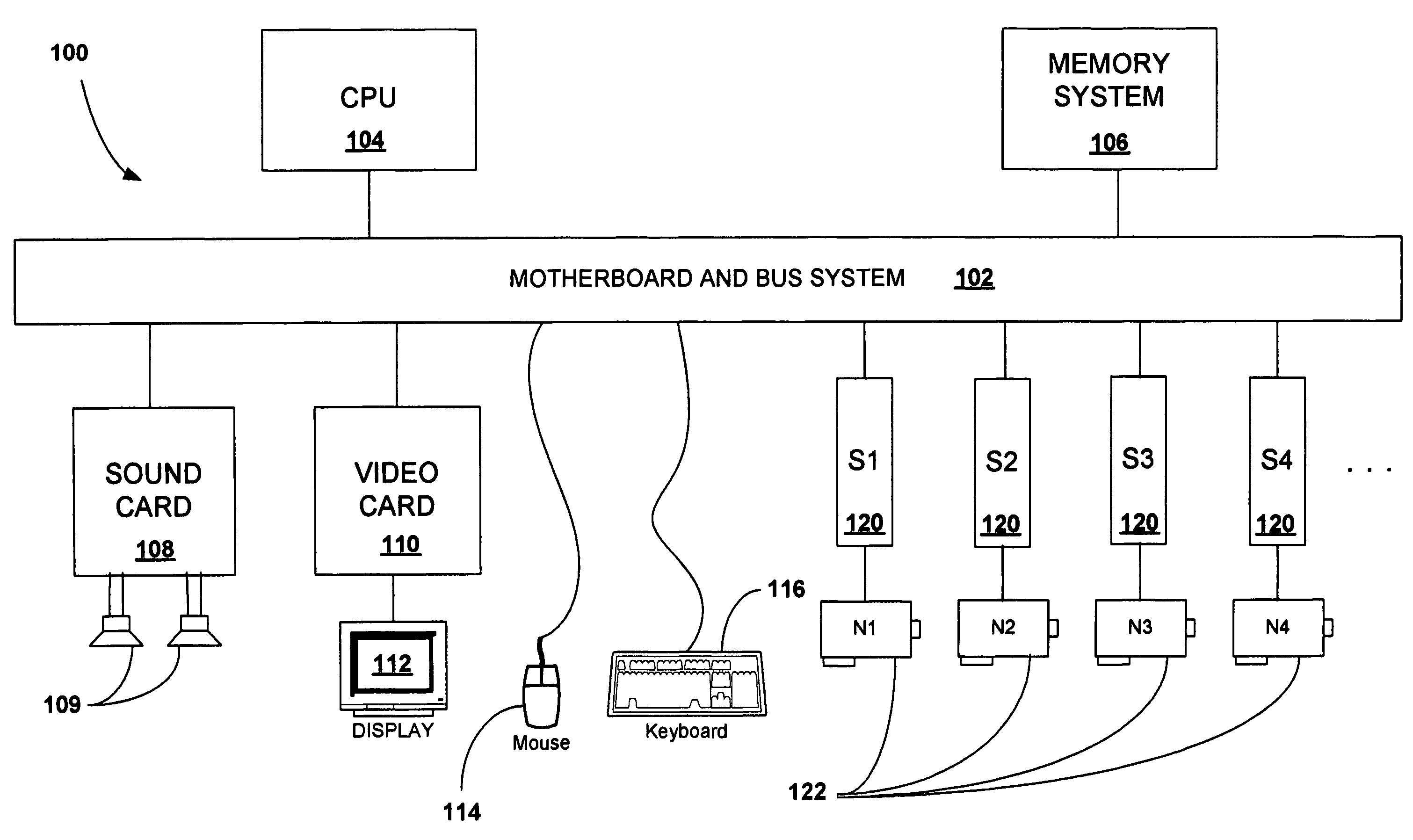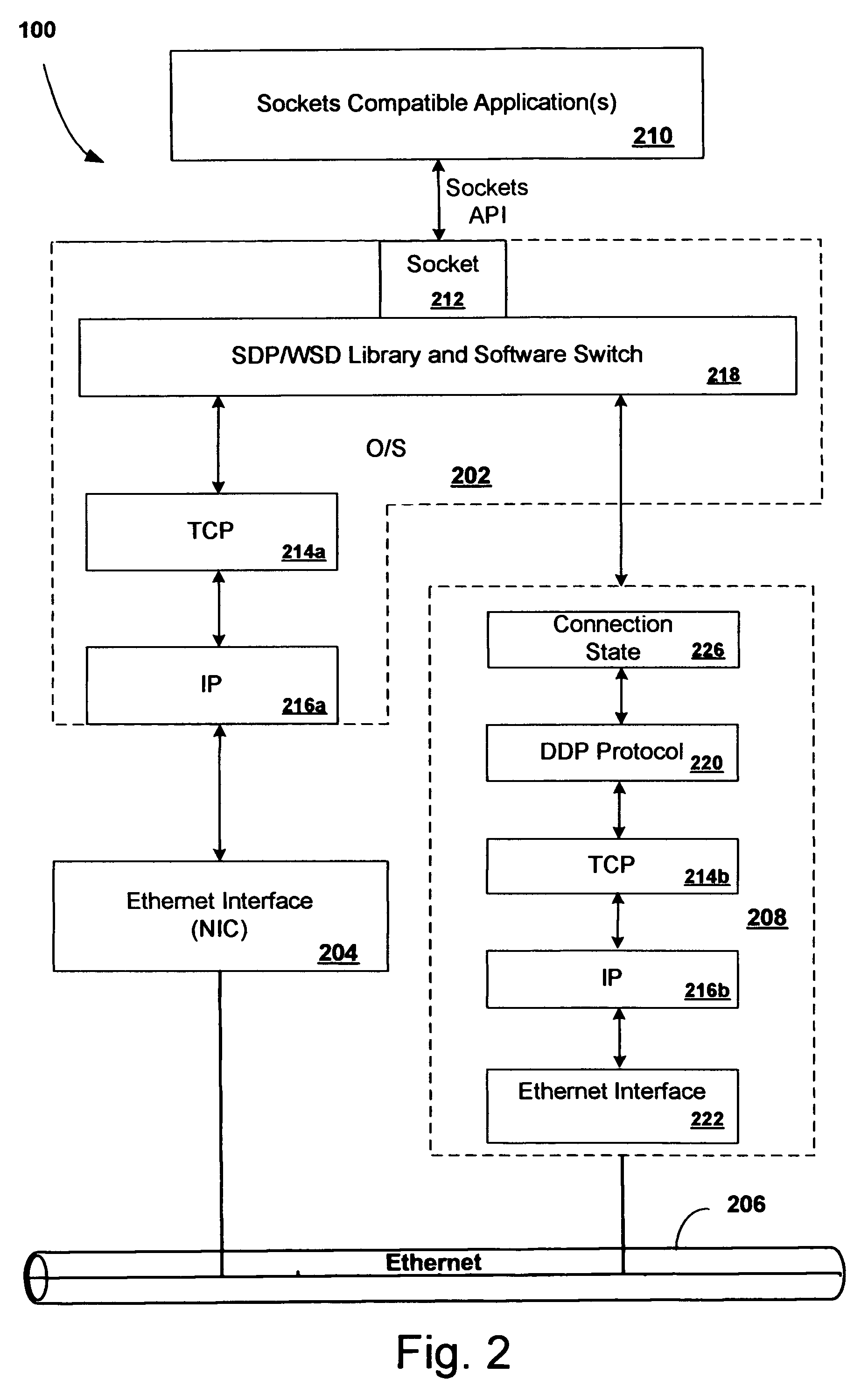Aggregation over multiple processing nodes of network resources each providing offloaded connections between applications over a network
a network resource and network connection technology, applied in the field of aggregation over multiple processing nodes of network resources each providing offloaded connections between applications over a network, can solve the problems of affecting the performance of the processor and the network interface, the positive impact of the processor performance and the throughput limitation of the network interface, and the increase of the network resource required to sustain the throughpu
- Summary
- Abstract
- Description
- Claims
- Application Information
AI Technical Summary
Benefits of technology
Problems solved by technology
Method used
Image
Examples
Embodiment Construction
Notation and Nomenclature
[0045]Certain terms are used throughout the following description and in the claims to refer to particular features, apparatus, procedures, processes and actions resulting there from. For example, the term network resources is used to generally denote network interface hardware such as network interface cards (NICs and RNICs) and other forms of network adapters known to those of skill in the art. Moreover, the terms NIC and RNIC or network adapter may refer to one piece of hardware having one port or several ports. Those skilled in the art may refer to an apparatus, procedure, process, result or a feature thereof by different names. This document does not intend to distinguish between components, procedures or results that differ in name but not function. In the following discussion and in the claims, the terms “including” and “comprising” are used in an open-ended fashion, and thus should be interpreted to mean “including, but not limited to . . . ”
[0046]Th...
PUM
 Login to View More
Login to View More Abstract
Description
Claims
Application Information
 Login to View More
Login to View More - R&D
- Intellectual Property
- Life Sciences
- Materials
- Tech Scout
- Unparalleled Data Quality
- Higher Quality Content
- 60% Fewer Hallucinations
Browse by: Latest US Patents, China's latest patents, Technical Efficacy Thesaurus, Application Domain, Technology Topic, Popular Technical Reports.
© 2025 PatSnap. All rights reserved.Legal|Privacy policy|Modern Slavery Act Transparency Statement|Sitemap|About US| Contact US: help@patsnap.com



